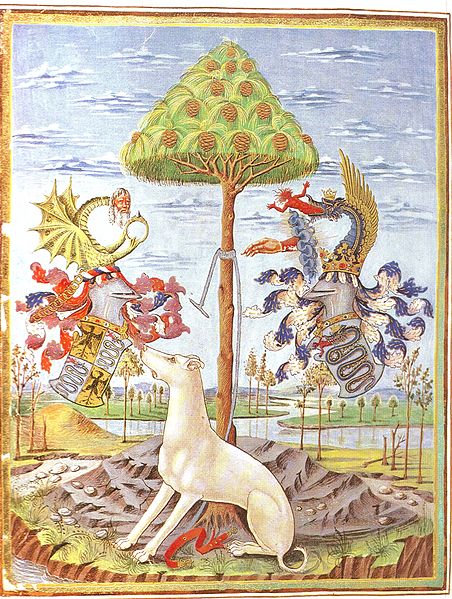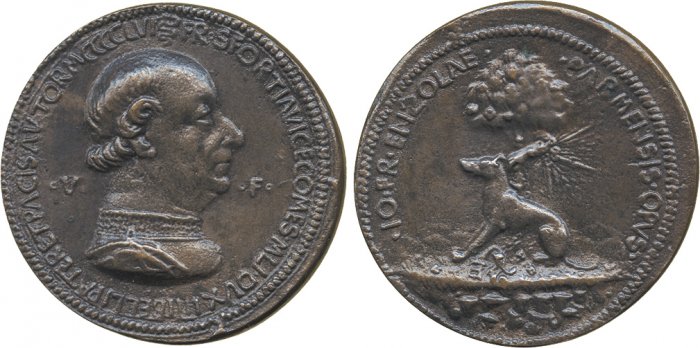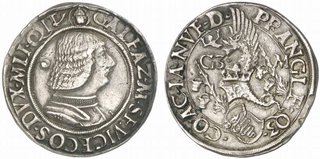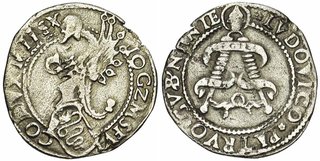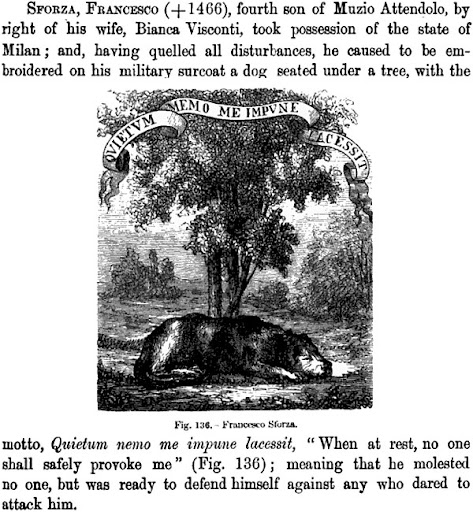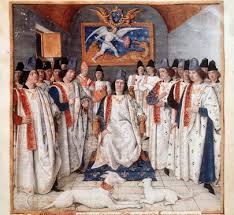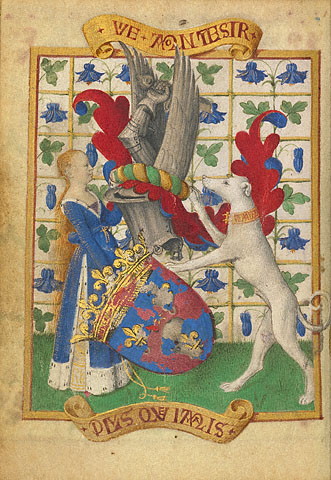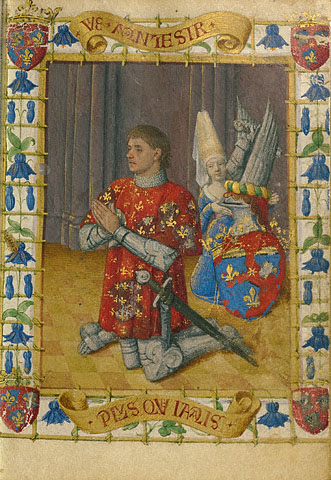Rosanne said:
Well I would agree with that. Or perhaps the Hat was a comment about it been for his granddaughter (the actual Hat- not the one on the deck) a snide aside about Pesaro and Malatesta's hated relation Carlo Malatesta.
Thanks for the further snippet about Bianca's letter- it makes total sense that diplomacy was hard for Bianca considering Malatesta's reputation. I think she did have contact via concerns about Giovanna, as that would be a natural thing for her to do.
I imagine it went something like this...
Bianca gets request with the added nudge that a straw hat is required (Malatesta would have known Bianca's reluctance) and she would have said something like this, as women have not really changed all that much....
"I got this letter from that wolf and you deal with it Francesca, after she is your granddaughter, I will not be bullied- he makes me sick and tired..." and then telling Malatesta in polite but firm words, that her Husband will deal with this request.
That is exactly how a woman would deal with a situation like this even today.
Note the Polite exchanges both written and verbal between Princess Diana and Camilla in our life time lol. Enmity is acid in the Hands of a female public figure. She would not stoop to a public show of dislike. You can bet the adjustments to the deck would be enough to cock a snook at Malatesta, may be even rub a little salt in with Sforza devices. That is a woman's way

~Rosanne
The church door of San Sigismondo near Cremona (where Francesco Sforza and Bianca Maria Visconti married) shows in the top left a dog with a tree ...
.... the same motif appears in the De Sfera manuscript (made c. 1470), which Anna Sforza got for her wedding to Alfonso d'Este in 1491.
There we see a little clearer the tree and that there is a tool with a rope at the tree ... this rather surely refers to the moment, when the young Muzio Attendola (Francesco's father), 12 years old (so it should have been c. 1381), threw his farmer pickaxe into a tree, such asking the oracle, if he should become a soldier in one of the condottieri troops or stay a farmer. The pickaxe didn't fell down, and Muzio Attendola started his way to become a famous condottiero.
So the Sforza family definitely showed "pride on low birth". The pickaxe symbol is well known, a "straw hat" symbol not.
Analyzing the phenomenon "Sforza" in detail on the base of ...
http://www.condottieridiventura.it/indicealfabetico/s.htm
...
1831 ALESSANDRO SFORZA
1832 ALESSANDRO SFORZA
1833 BOSIO SFORZA
1834 BOSIO SFORZA
1835 COSTANZO SFORZA
1836 FRANCESCO SFORZA
1837 GALEAZZO SFORZA
1838 GIAMPAOLO SGORZA
1839 GIOVANNI SFORZA
1840 GIOVANNI SFORZA
1841 LEONE SFORZA
1842 MARIO SFORZA
1843 MUZIO ATTENDOLO SFORZA
1844 PAOLO SFORZA
1845 SFORZA SFORZA
...
.. then one detects, that Francesco Sforza looks in general history as a "single famous man", but the reality shows the success of a "family gang". Muzio Attendola had a lot of brothers and sisters, Muzio Attendola had a lot of children and Francesco Sforza had a lot of children (and many of these had a career as condottiero or were otherwise active in military operations ... and so don't appear in the above list).
Different to many other established Condottieri-families the Sforza had in their early time (Muzio Attendola, Francesco Sforza) not so much inner trouble as other families (the records of bloody inner disputes inside famous families like Malatesta, Gonzaga, Este etc. is rather remarkable), the Sforzas detected this quality late (after Galeazzo Maria) and this more or less "missing action against the own family solidarity" before was likely the reason for the overwhelming success.
**********
But let us take a view at Fermo and "its straw hats":
From a Fermo page:
A buying advise:
"From Fermo and the surrounding towns, look out for:
Copper work from Force and Comunanza (the trade goes way back to the coming of the Farfensi in Marche);
- antique furniture from Amandola;
- straw hats and bags from Montappone, Massa Fermana and Monte Vidon Corrado;
- brocche ceramic jugs from Montottone;
- shoes from Porto Sant'Elpidio, Monte Sanpietrangeli and Monte Urano"
From a linked page from the Fermo site:
http://www.deliciousitaly.com/artigiano.php?id=7®ione_id=10
Hat Museum of Montappone
[... about 30 km distance to Fermo[/b]
The tradition of hat making in this hill top town grew out of a local legend passed on from generation to generation.
It evolved out of the story of a young peasant who wanted to marry the daughter of the local king. Only possessing the grain in his field he was initially rebuffed. Yet, inspired by the criss cross flying of three birds as the sun set, he set about making a hat weaving the stems of his crop.
Impressed by his dexterity the King accepted the proposal on condition he could wear the hat at his daughter's wedding. Needless to say the straw hat became a popular local symbol of good fortune and eventual prosperity.
... The area is still an important center for grain production and the museum demonstrates how the classic hat is made as well as housing a collection of rare turn of the century headgear.
Then I found:
http://www.italtrade.com/focus/6182.htm
The small but historic town of Montappone, in the Fermana hills in the province of Ascoli Piceno in Italy's Marche region, is the centre of Europe's most important hat-producing district. Already in the 17th century the area around Montappone specialised in the working of straw for the production of hats, together with the nearby towns of Massa Fermana, Monte Vidon Corrado, Falerone, Mogliano, Loro Piceno and Sant'Angelo in Pontano. The traditional craft working of straw hats was transformed over the years into the production on a vast scale, and towards the end of the 19th-century the town became the first Italian Centre to industrialise hat production.
Also at a history page of Montappone
http://cultura.fermo.net/public/mus...&pg=0&chkPrz=0&cmpPrz1=&cmpPrz2=&db=DB7000002
Nel 1446, successivamente alle conquiste del guelfo Carlo Malatesta nel 1413 ed ai 15 anni di governo di Francesco Sforza, tutto il territorio tornò all'obbedienza del Papa.
A picture from 18th century. As I understand it, a fortification, which probably served Sforza during his stay as residence was destroyed in 1446 (I'm not sure, if it was at the central place).
The straw hat industry seems to have developed with the central in Montappone (30 km distane to Fermo) and this in 17th century, so no confirmation for 15th ... do you have something else?
The local internet pages don't speak too much of Sforza, likely the papal reign since 1446 did a lot to make this short period forgotten; history is written by the winners, that's an old custom.
The interests of Sforza in 1452 (6-7 years after the Fermo rebellion) might have been different. He had taken Milan meanwhile, but did he had forgotten Fermo and his earlier defeat?
Since April/June 1452 a new war had appeared, and with this the arrangement of the peace between spring 1450 - April 1452 was not dominating. A new war ... this meant new chances to turn the results of earlier defeats in new victories.
The production of the deck (according Pizzagalli's information) happened around November 1452. The straw hat at the Magician table might reflect Sforza's approach and hopes to regain the Fermo territory.
These hopes turned quickly to nothing with the peace of Lodi in spring 1454, and as we know, Sforza never regained Fermo.
But Sforza in 1452 didn't know that.


